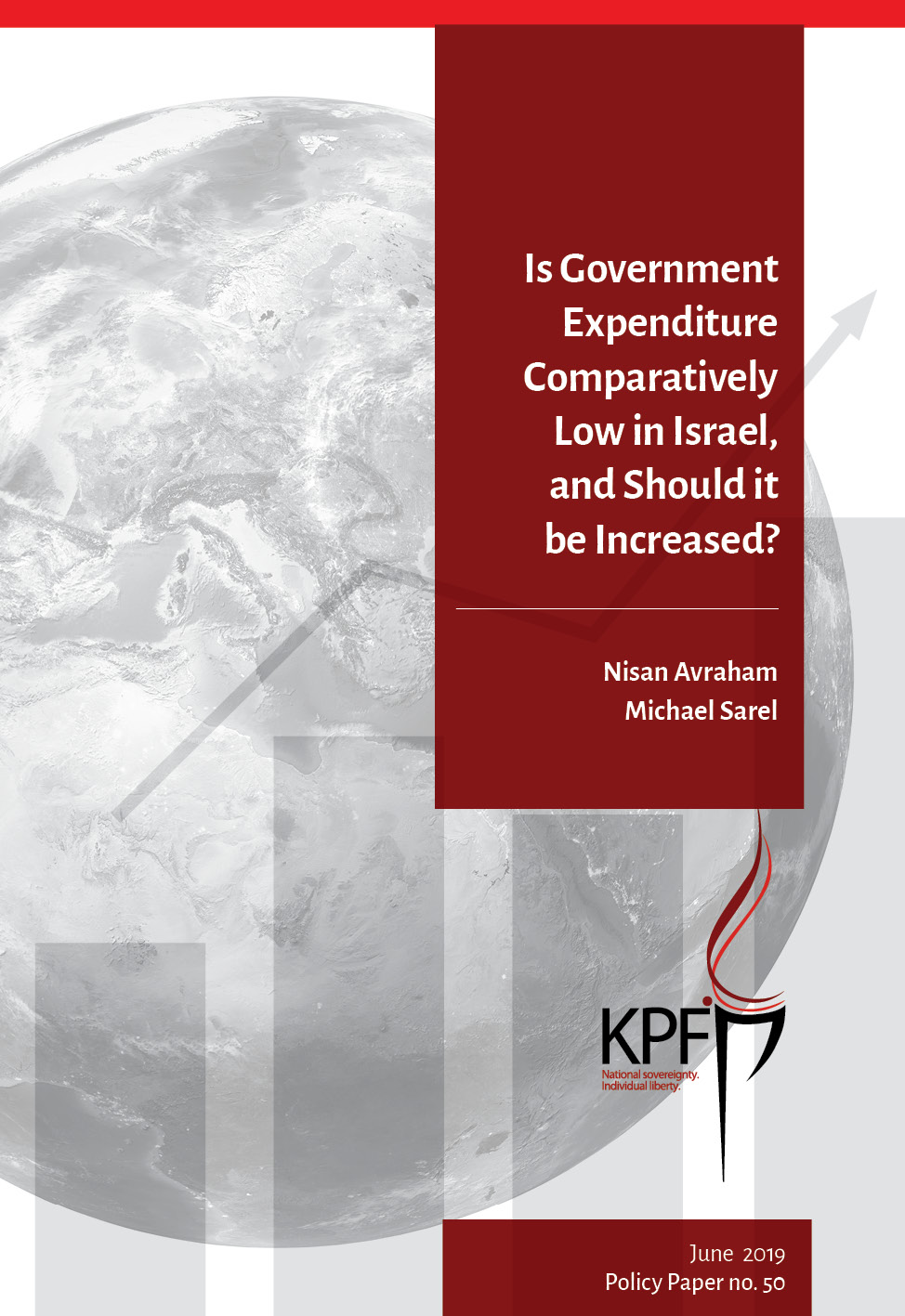In recent years, it has been frequently argued that government spending in Israel is low compared to other developed countries, and should therefore be increased. The first part of the argument, however, is open to question because many comparisons ignore significant institutional and demographic differences between Israel and other advanced countries; and the second part of the argument ignores the generally negative effect of increased government spending on economic growth.
As the process of globalization expands and economic relations between countries become stronger, studying the experiences of peer countries has increasing policy relevance. Yet, if institutional and demographic differences between countries are not taken into account when the measurements are conducted, they are liable to confound the comparisons. After these differences are taken into consideration, relative government spending in distinct countries may differ greatly from simplistic comparisons of official figures.
Recently, the Kohelet Policy Forum published a comprehensive study quantifying institutional and demographic differences between countries, which significantly lowered the measured government spending in Israel relative to that of other developed countries. The study also examined the expected cost to the economy (and to the citizens’ income) of adopting a policy that increases government expenditure, and consequently, the tax burden.
The government spending is based on the official measure, which does not take into account institutional and demographic differences between countries. Yet, even without adjustment for these significant differences, the spending of the Israeli government is not low, but rather similar to the average in other advanced economies, slightly above or below that average, depending on how the group of relevant countries is defined.
Furthermore, the relative position of Israel changes significantly when we take into consideration institutional and demographic differences between countries.
The most significant institutional difference is in the pension systems of the various countries. These differences are due to a variety of reasons and their implications for the measurement of government spending is significant. In many of the developed countries, a state pension passes in full or almost in full through the government system, and it is included in the calculation of government spending. By contrast, in Israel, a substantial part of pension finance is not processed through the government system.
All employees and self-employed individuals in Israel are compelled by law to set aside a fixed percentage of their income to an accrual fund managed by a private pension fund. Therefore, payments to cumulative employment pensions and the expenses related to them are not included in published figure of the tax burden and of government spending.
Thus, government intervention in the economy through regulation, as a substitute for tax collection and its distribution by the government, creates a distortion in the measurement of government spending in Israel compared to other developed countries. If we calculate the pension contributions and payments as part of the state budget, as is common in most advanced countries, we find that government spending in Israel is higher than the OECD average. The measured tax burden would increase by 2.8 percent of GDP, and government spending by more than 2.5 percent of GDP.
Another significant institutional difference is the level of direct taxes imposed on stipends (welfare allowances and other government benefits). Most OECD countries tax these stipends. This means that a large part of the benefit payments is returned to state coffers, which artificially increases government spending and the tax burden in many developed countries, particularly in Europe.
In Israel, by contrast, most of the stipends are exempt from tax, and generally subject only to a minimal health insurance payment. Therefore, the taxation of transfer payments in Israel is significantly lower than the international average, and stands at less than 0.1 percent of GDP, compared with the OECD average of 1.15 percent of GDP.
Another important difference is that the unique geopolitical situation in Israel necessitates significantly higher defense costs than is customary in developed countries. These high costs have many ramifications which concern government spending, the tax burden, and the ability of the government to allocate resources to civilian needs. It is unreasonable to expect the scope of civilian expenses not to be affected by the high burden of defense spending imposed on Israeli residents, and for the full security burden to be paid entirely from tax revenues. Globalization limits the ability of Israel to impose much higher tax rates on its citizens than is accepted in other developed countries.
Moreover, in Israel, many defense expenses are imposed directly on the residents, without being counted as part of government defense spending. The highest defense spending not counted as government spending is compulsory military service. The Compulsory Recruitment Law allows the defense establishment to pay very low salaries to enlisted men and women; this alternative cost is similar to a poll tax. If the defense establishment paid wages to the enlisted soldiers, the reported government spending would be expected to increase significantly.
Another expense is the cost of the apartment protected space (APS). In Israel, the law adds to the price of apartments by requiring the addition of an APS to each new apartment that has more than two rooms. Not counted as government spending are also the costs of the unique security services in Israel, which are financed by higher consumer prices. Together, the indirect defense and security costs amount to about 2 percent of GDP.
Additionally, a range of regulatory provisions in Israel are designed to support various industries. These costs are not counted as part of government spending either. An example is the unique protection that agriculture receives through the imposition of import tariffs on a variety of agricultural products, intended to increase the price of these products to the consumer. It is Israeli households that pay the cost of the subsidy, but not through taxes that the government collects and uses to subsidize farmers, as in many other countries, but by purchasing agricultural products at particularly high prices. There are many other examples of this form of support, such as the widespread use of tax benefits (as granted, for example, by the Encouragement of Capital Investments Law), and regulation of the taxi industry, which results in higher prices for consumers.
Another significant difference is in demographics. The composition of the population in Israel differs significantly from that of most developed countries. Based on data from 2017, Israel is the youngest among developed countries, and the percentage of its elderly (aged 65+) is among the lowest. The empirical study we conducted shows that the rate of the elderly population is expected to have a significant effect on government spending. In countries where the elderly account for a high proportion of the population, especially in Europe, the government is obliged to spend more on social security and health, and as a result, total government spending is higher than in countries like Israel. By contrast, the proportion of children does not have a clear effect on government spending, and, in any case, its expected effect is weaker than that of the proportion of the elderly.
Our study also examined the effects of government spending on growth. The findings point to significant harm expected to economic growth as a result of an increase in both government and civilian spending. We conducted many different tests based on international data of the last three decades. In all of the models we examined, we found a statistically significant negative effect of government spending on economic growth. We also found that this potential effect had increased over time, and has been particularly strong in the last decade.
Understanding the institutional and demographic differences between the various countries is important for constructive public discourse in Israel, especially given that many participants in this discourse call for increased government spending, based on a simplistic comparison between countries and ignoring the differences between them. This is especially problematic when the message they convey ignores the possible negative effect of increased government spending on economic growth.




